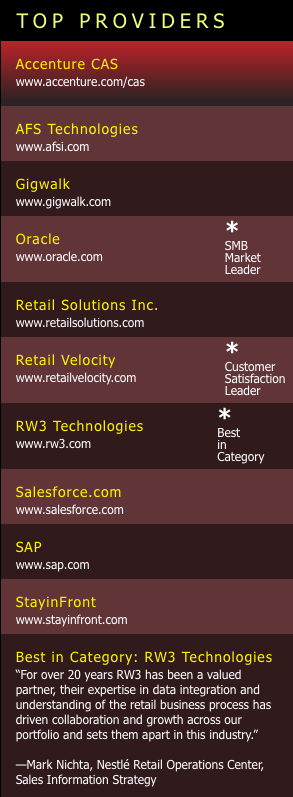2016 Readers' Choice Survey: Digital Commerce
By: Luca Bonacina, Senior Research Analyst – Western Europe, IDC Retail Insights

Digital commerce solutions have evolved quite rapidly over the last couple of years. This evolution allowed many new players to step into the market and start to sell their solutions together with the incumbent companies. Despite this trend, this year’s ranking is largely as one can expect: no big surprises have been registered. In fact, all the major incumbent vendors with strong product offerings have been reported into the Top 5 list.
These results are aligned to the research that IDC and IDC Retail Insights has carried out.
However, niche players — in terms of type of solution offered, geographical scope, mid-market coverage and retail segment focus — will have to be monitored over time as they might provide interesting solutions. Companies like Intershop and Worldline have a strong European focus, while eBay Enterprise is offering very interesting solutions for tier 3/4 companies.
Over the past three years, the digital commerce market has matured rapidly across the world. At the beginning it was just focused on e-commerce and everyone was targeting only the retail industry. Now things have changed; in fact, digital commerce applications allows — if properly integrated with other omnichannel IT systems — virtually any company to take its products directly to consumers.
Companies — especially in the retail and consumer packaged goods (CPG) industry — have made multiple investments in this space as a strategic move, given the evolution of shoppers (i.e., their quest for shopping convenience and the best price) and the possibility of putting in place a less risky and more cost-effective internationalization strategy (to test market viability before going for more considerable investments). However, even more investment is expected in this space as the whole technology and business situation is rapidly evolving and is pushing end-user companies to deploy more advanced capabilities.
Adding mobile capabilities will be the next frontier for those companies that are looking to optimize customer experience across multiple customer touch points. When talking about mobile, one should consider that a one-size-fits-all approach is not going to work; different strategic requirements drive a variety of customer-facing development approaches.
Customer centricity has been identified as one of the most pressing priorities for CPG from a business perspective. This, in turn, is influencing investments in customer-facing solutions like CRM, customer engagement/self-service tools, and e-commerce.
Investing in digital commerce solutions and any related add-on tool will be of paramount importance for CPG companies going forward. However, any customer-facing investment should be strategically planned by keeping into consideration all the other foundational investments in those technology areas that will allow CPG companies to become more agile and fully customer oriented.
